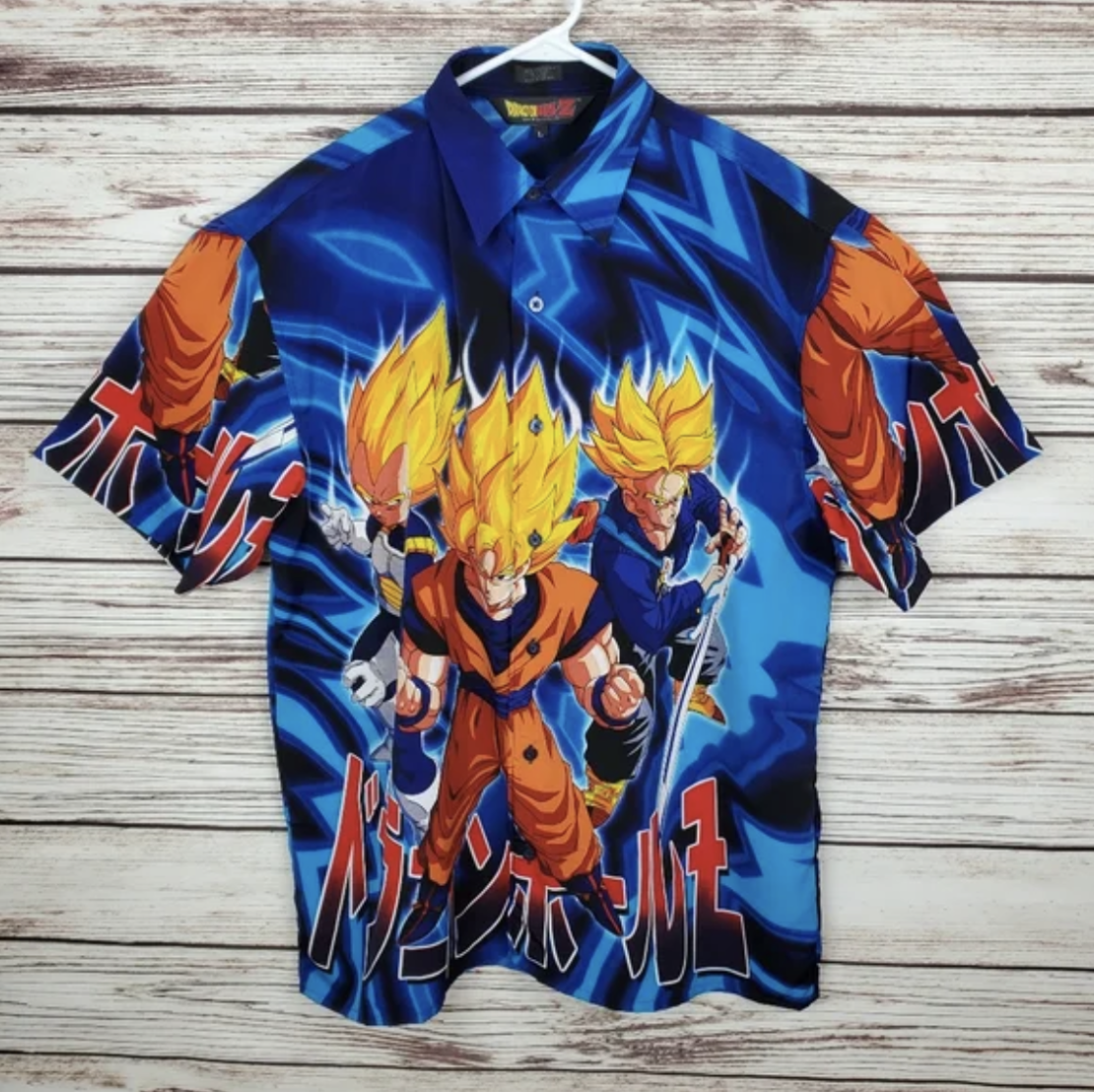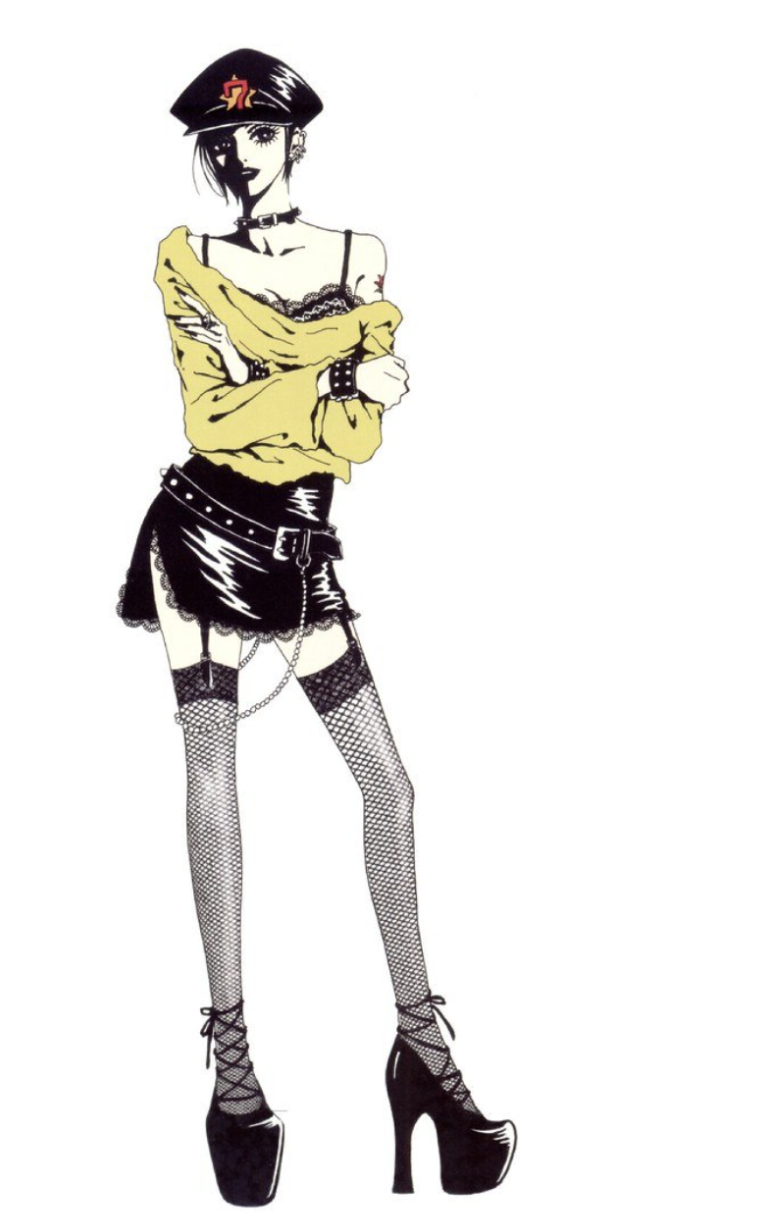Drawn to Inspire: Anime’s Impact on the Fashion World
By Kyle Earl
From Megan Thee Stallion’s clothing collaboration with anime distributor Crunchyroll to Loewe’s collections with the beloved Studio Ghibli, Japanese animation is becoming increasingly prominent in the current sartorial world. This is not merely a recent development, as anime and fashion have long interacted with one another.
One of the earliest instances of fashion and anime’s convergence is via cosplay: the art of dressing up as one’s favorite anime character. Gaining traction in the 80s, many cosplayers would excitedly attend conventions such as Comic Con and Anime Expo to show off their anime-inspired costumes–viewing these events as a welcoming home for their passion. These conventions also were one of the few ways to acquire anime merchandise.
Characters from popular series including Dragon Ball, Naruto, and Pokémon were plastered onto t-shirts, hats, keychains, stickers, etc. Once viewed as niche and nerdy, Japanese animation has now become a global phenomenon enjoyed by many due to its complex storylines, creative visuals, and relevance to modern-day issues. Anime has transcended such preconceptions and has even become viewed as a cool interest, making it a major driver of youth culture and fashion. But before Japanese cartoons could find their place in the fashion realm, anime artists were looking at Parisian runways for inspiration.
Vintage 90s Dragon Ball Z Button-Down Shirt (Poshmark)
Naoko Takeuchi, the creator of the illustrious anime Sailor Moon, often fashioned her heroines based on the couture of her time. From Princess Serenity’s Dior-inspired Palladium gown to Sailor Saturn’s black bow ensemble from Mugler’s 1992 fall/winter collection, Takeuchi brought the runway to her animated world.
Left: Princess Serenity in a Palladium gown from Dior’s 1992 Spring/Summer show (Vogue)
Right: Dior’s Haute Couture 1992 Spring/Summer runway show (Vogue)
In addition to fusing her fantastical story with high fashion looks, casual attire such as high-rise denim, cropped cardigans, color-blocked varsity jackets, and knitted turtlenecks were seamlessly incorporated into the daily lives of the Sailor crew. When fighting villains, the sailor schoolgirls activated powers that resulted in an alteration of clothing. As the girls underwent their iconic transformations, their outfits typically generated more frills, ribbons, and hearts–embracing the ideal that femininity can be a source of empowerment. This sentiment resonated with a generation of young girls, motivating them to adopt the styles seen in the show with confidence.
FAST model Aanchal Darooka wearing a bright, stylish outfit that seems to have come directly from the world of Sailor Moon.
Photo: Amber Zheng (@amberzphoto)
In contrast to the preppy and high-chromatic ensembles sported by the magical femme-fighters, Ai Yazawa’s series Nana included alternative looks that were suited for early 2000s misfits. Nana tells the story of two girls named Nana who both left their small towns to pursue a better life in the bustling city of Tokyo. One half of the protagonist-duo, Nana Osaki aims for musical stardom as the vocalist of her rock band BLAST. From her wine-red lips to her smudged eyeshadow, Osaki’s glam-punk rock style made her an anomaly amongst her peers. Her unique look as well as her cool confidence captivated those around her. Seeing Nana as a visual guide for style, young girls looked up to the way the character rejected uniformity.
Photo Credit: Jacob Ursua (@jursuaphoto)
In the same way that rebellious girls of the 2000s were influenced by Nana, creator Ai Yazawa first looked towards Vivienne Westwood’s runway shows for inspiration. A long-time admirer of the designer, Yazawa got permission from Westwood to dress her characters head-to-toe with pieces from the London-based innovator. Nana Osaki regularly flaunted Westwood’s “Sovereign Orb” logo in the form of earrings, chokers, and safety pins. The now best-selling “Armour Ring,” a massive silver ring that made an appearance in the first episode of the series, gave viewers a preview to the defiant style that was going to be present throughout the story.
The heart lapel jacket, three bow bas relief choker, and rocking horse shoes were among other iconic looks modeled by the stylish singer. Vivienne Westwood’s features were not exclusive to Osaki, as BLAST’s bass player Shin perpetually wore an orb lighter chain around his neck. Nana Osaki’s boyfriend and ex-band member Ren Honjou looked like the splitting image of Sid Vicious from the Sex Pistols — a band who Westwood played a large role in styling. Yazawa further showed her love for the UK punk scene as well as Vivienne’s revolutionary spirit by frequently styling Nana’s band members with tartan suits, bondage pants, and ripped shirts. This series popularized Vivienne Westwood in Japan and inspired a generation to wear Saturn orb necklaces, ripped stocks, leather jackets, and pleated mini skirts. Nana served as a gateway for teens to rebel against conformity and feel comfortable expressing themselves through fashion.
Photo Credit: Jacob Ursua (@jursuaphoto)
The emergence of TikTok has resulted in a boom in anime’s popularity and influence on the youth. Fashion and Japanese animation have never been more intertwined, with a simple search of #animeoutfits displaying a myriad of easy-to-adopt outfits that carry the vibe of various anime characters. These posts have popularized a reimagined form of cosplay, with users curating outfits inspired by anime without fully delving into the costume scene. Some accounts on the platform are dedicated to reimaging characters with a high fashion twist, featuring brands such as Prada and Burberry to capture their envisioned look.
Tiktok user @jakepeterss wearing a naruto-inspired outfit featuring a Prada jacket (TikTok)
Not only has anime served to influence the attire of today’s youth, but Luxury houses have also become increasingly drawn to the artistic phenomenon. Gucci has been at the forefront of anime collaborations, evidenced by their partnerships with a multitude of shows like Doraemon, Jojo’s Bizarre Adventure, and One Piece. Other collections such as Balmain x Pokémon, Balenciaga x Hello Kitty, and Loewe x My Neighbor Totoro continue to prove Japanese cartoons' prominence in the fashion industry.
A Japanese magazine cover highlighting the collaboration between Gucci and Jojo’s Bizarre Adventure (Spur)
Anime hasn’t only been the subject of collections but also serves as inspiration to designers. Louis Vuitton’s Spring/Summer 2016 ready-to-wear show featured visuals inspired by Neon Genesis Evangelion, Ghost in the Shell, and Sailor Moon. Moschino’s Fall/Winter 2020 runway show featured “Anime Antoinette” — an amalgamation of Marie Antoinette and visuals from Riyoko Ikeda’s series Rose of Versailles. Prada’s founder Miuccia Prada took a liking to the animated movie Appleseed largely due to its strong female lead and themes of women empowerment. The renowned designer created two original outfits for the movie’s virtual protagonist, one being a cocktail dress and the other being a coat that matched the dark themes of the film while still retaining the brand’s elegance.
Left: Moschino’s “Anime Antoinette” at Fall/Winter 2020 runway show (Twitter)
Middle: Jacket from the 2017 Supreme x Akira collection (Supreme)
Right: Jacob Ursua (@jursuaphoto)
Having come a long way from its conventional roots, anime streetwear can now be found anywhere from mall kiosks to the stores of fashion powerhouses. Collections like Adidas x Dragon Ball Z, Air Jordan x Slam Dunk, and Primitive x Naruto emphasize the continued profitability there is in fashion and anime collaborations. In addition to these companies, notable brand Hypland is making waves in anime streetwear through its partnerships with Hunter x Hunter, Bleach, Hello Kitty, and Inuyasha. Uniqlo is also a go-to spot for anime streetwear due to its various collaborations, including the Shonen Jump Magazine itself. Upscale streetwear enterprises have also expressed an affinity for anime. Supreme and Akira’s collaboration features a burning-red jacket that is reminiscent of the attire rocked by the movie’s protagonist Mitsuru Kuwata. BAPE is heavily involved in anime, evidenced by their partnerships with One Piece, Dragon Ball, and Pokémon. In recent years, there has been a rise in independent companies selling anime pieces primarily through the Instagram app. Brands such as icantlook, Sagesone, and Animato are selling custom apparel in very limited quantities, granting the few that purchase from their stores an exclusive piece that stands apart from the large slew of anime collaborations.
From illustrated drawings to the hands of courtiers, today’s youth are merging two dimensions. Having come full circle, designers are introducing the next generation of youth to the art that 80s and 90s kids were influenced by. As anime continues to bleed into fashion we can look forward to exciting collaborations and collections, as well as more outlets of self-expression.
Photoshoot Styling by Elaine Kim (@elainee.kim) and Thao Vy Huynh (@tabascopicasso)












